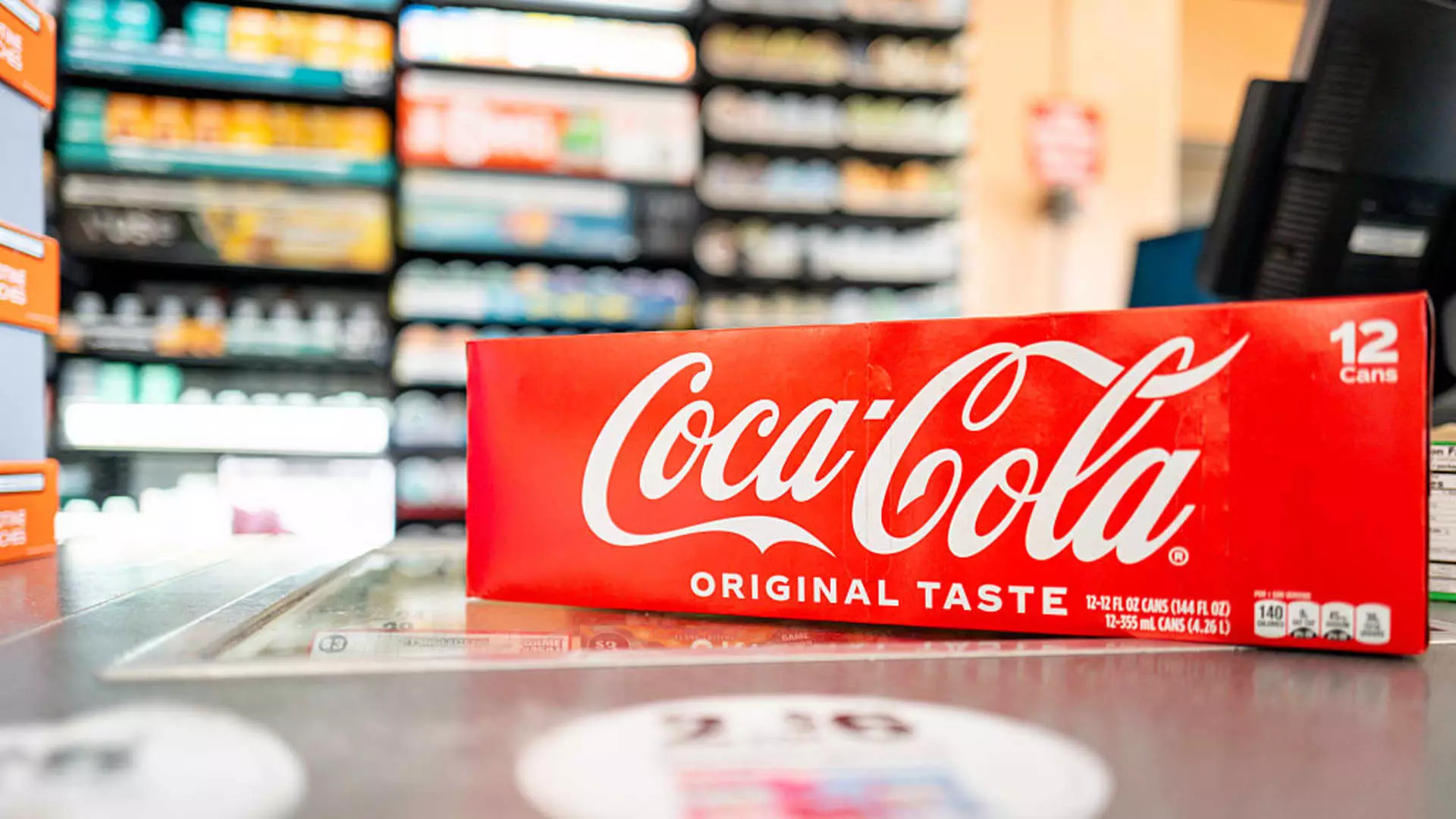Coca-Cola’s recent earnings report paints a picture of modest success, yet beneath the surface lies a complex reality that demands a skeptical eye. While the company surpassed analyst expectations with earnings per share of 87 cents versus the predicted 83 cents, and revenue inching past estimates at $12.62 billion, this veneer of financial robustness obscures deeper weaknesses. The immediate reaction—shares dipping less than 1%—suggests that investors aren’t entirely convinced that these numbers herald genuine growth. From a critical standpoint, beating expectations in a challenging market environment isn’t necessarily a sign of sustainable health; it might simply indicate that analysts had already priced in a cautious outlook, or that Coca-Cola’s financials are more resilient than the actual consumer demand warrants.
Volume Declines and the Illusion of Recovery
A focal point of concern is the staggering 1% decline in global unit case volume, excluding pricing and currency effects. This decline signals waning demand in key markets—an ominous indicator in an environment where volume is often a more reliable gauge of consumer health than revenue alone. While the company boasts a 5% organic revenue increase—a desirable metric excluding acquisitions and forex—the fact remains that most divisions, aside from EMEA, experienced shrinkage in demand. The broader narrative that “markets are improving” appears overly optimistic when juxtaposed with declining unit volumes in North America, Latin America, and the Asia-Pacific. The mention of “improved” volumes compared to the first quarter could be dismissed as a transient rebound rather than a sign of lasting recovery. In essence, Coca-Cola’s growth is inflation-driven, not demand-driven—an unsustainable pattern that relies on price increases rather than genuine consumer preference.
Market Pressures and Consumer Confidence
An underlying theme in Coca-Cola’s performance is the fragility of consumer confidence amid economic uncertainty and geopolitical tensions. CEO James Quincey’s acknowledgment that “markets that were weaker in the first quarter improved” could be interpreted as a polite way of admitting ongoing volatility. The North American market’s 1% volume decline, despite some resilience, reflects an evolving landscape where consumers are more cautious, especially in lower-income segments targeted by Coca-Cola’s marketing strategies. The social media controversy surrounding Coca-Cola’s report on undocumented workers temporarily depressed sales in Latin America—a stark reminder of how external political factors can impact fundamental demand. That Coca-Cola can recover from such negatives should not overshadow the fact that its core volume trends remain roughly flat or declining, not thriving.
Strategic Moves and Future Outlook
The company’s decision to introduce a cane sugar version of Coke in the U.S. highlights a strategic pivot aimed at appealing to traditional consumers and niche markets. However, this move alone is unlikely to reverse the downward trend in core volumes. The company’s conservative forecast of 3% growth in full-year earnings per share and a modest 5% to 6% increase in organic revenue for 2025 signals a cautious approach. Detaching from aggressive growth targets, Coca-Cola seems to accept that the current environment necessitates maintaining stability rather than pursuing bold expansion. While the company’s diversification into water, coffee, and dairy segments presents some buffer, it also underscores the uneven demand across different beverage categories. Investment in health-conscious and value-oriented products might cushion declines temporarily, but these segments face their own structural challenges that could limit long-term growth.
The Illusion of Positivity in a Turbulent Market
Ultimately, Coca-Cola’s recent performance exemplifies a corporation at a crossroads—clinging to a narrative of resilience while grappling with shrinking demand and external headwinds. Its ability to beat expectations superficially impresses, yet the fundamental metrics—declining unit volume, consumer caution, and geopolitical pressures—paint a more nuanced picture of a company struggling to adapt to a rapidly shifting landscape. The notion that Coca-Cola can merely tweak its product lineup or rely on pricing strategies to sustain growth appears increasingly fragile. The true test will be whether Coca-Cola can innovate its offerings, genuinely connect with evolving consumer values, and manage external risks—tasks that are far more complex than hitting quarterly targets.


Leave a Reply